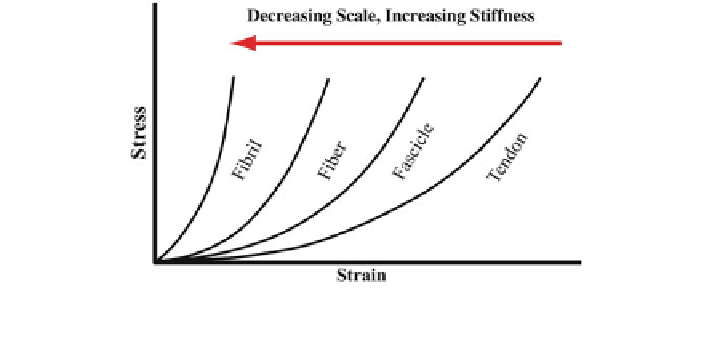Biomedical Engineering Reference
In-Depth Information
Fig. 5 Although there are conflicting reports, it appears that the stiffness of ligament and tendon
tissue constituents increases with decreasing scale
Table 1
Mechanical testing of ligaments and tendons has been performed at multiple scales
Scale
Studies
Methods
Key Findings
Macro
[
55
,
133
,
147
,
234
,
241
,
250
]
Tensile testing
Anisotropic, nonlinear
mechanical behavior
Shear testing
Large viscoelastic response
Viscoelastic testing
Spatially inhomogeneous strain
field
Meso
[
16
,
96
,
107
,
126
,
250
]
Subdivision of tendon
Scale dependent stiffness
Isolation of single fascicles
Scale dependent viscoelasticity
Severing fascicles within intact
tissue
Weak shear coupling between
fascicles
Fascicles are loaded unevenly
Micro
[
89
,
162
,
198
-
202
]
Isolation of single fibers
Spatially inhomogeneous
deformation
Confocal imaging of strained
tendon fascicles
Large inter-fiber sliding
Micro strain less than macro
strain
Microscale mechanisms of
viscoelasticity
Nano
Testing isolated fibrils Fibrils are stiffer than
macroscale tissue
AFM of strained fibrils Fibrils are viscoelastic
X-ray diffraction Fibril strain less than
macroscopic strain
Summarized in this table are representative studies for each scale level, the test methods used and
some key findings
[
190
,
222
,
228
,
239
,
251
]



Search WWH ::

Custom Search